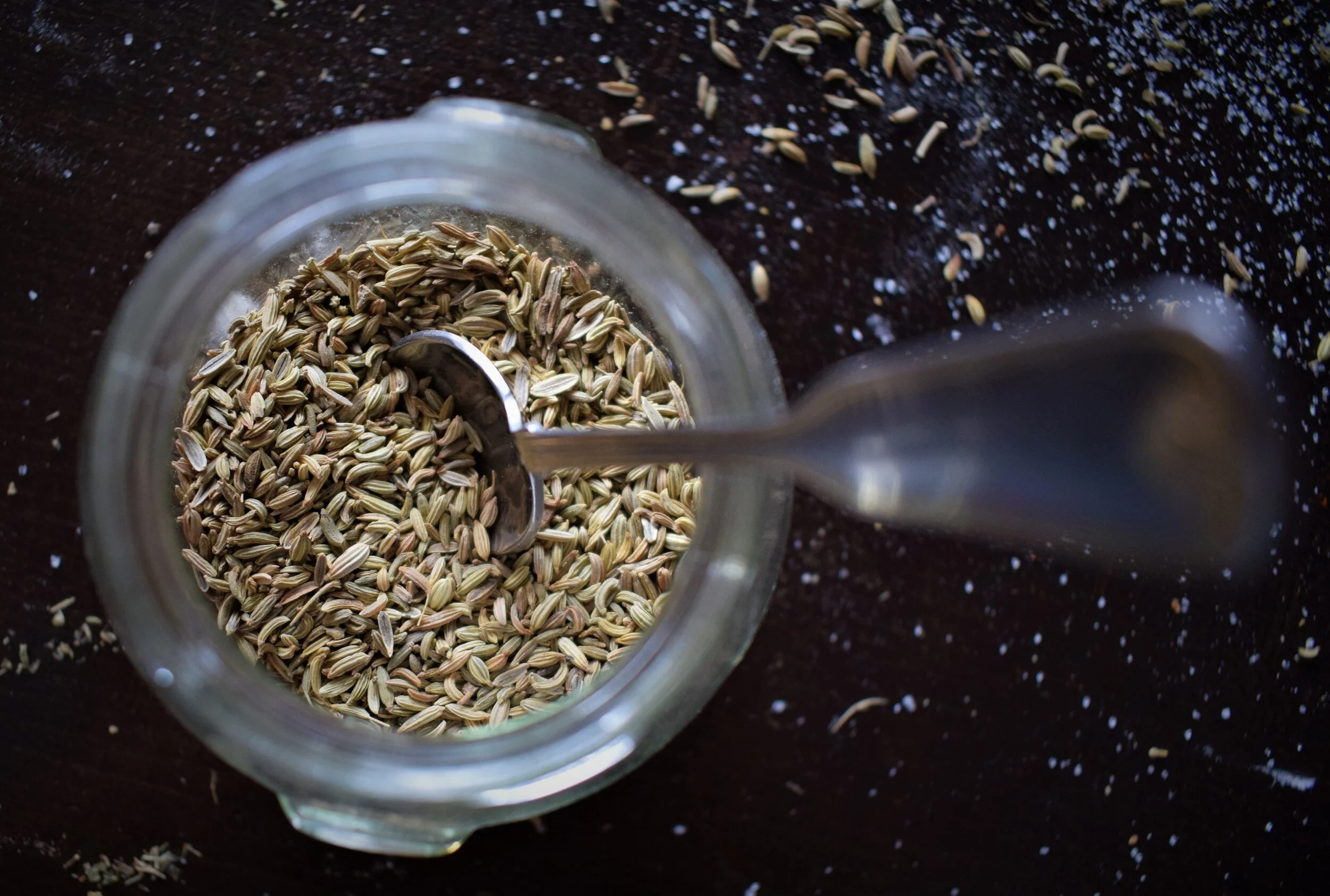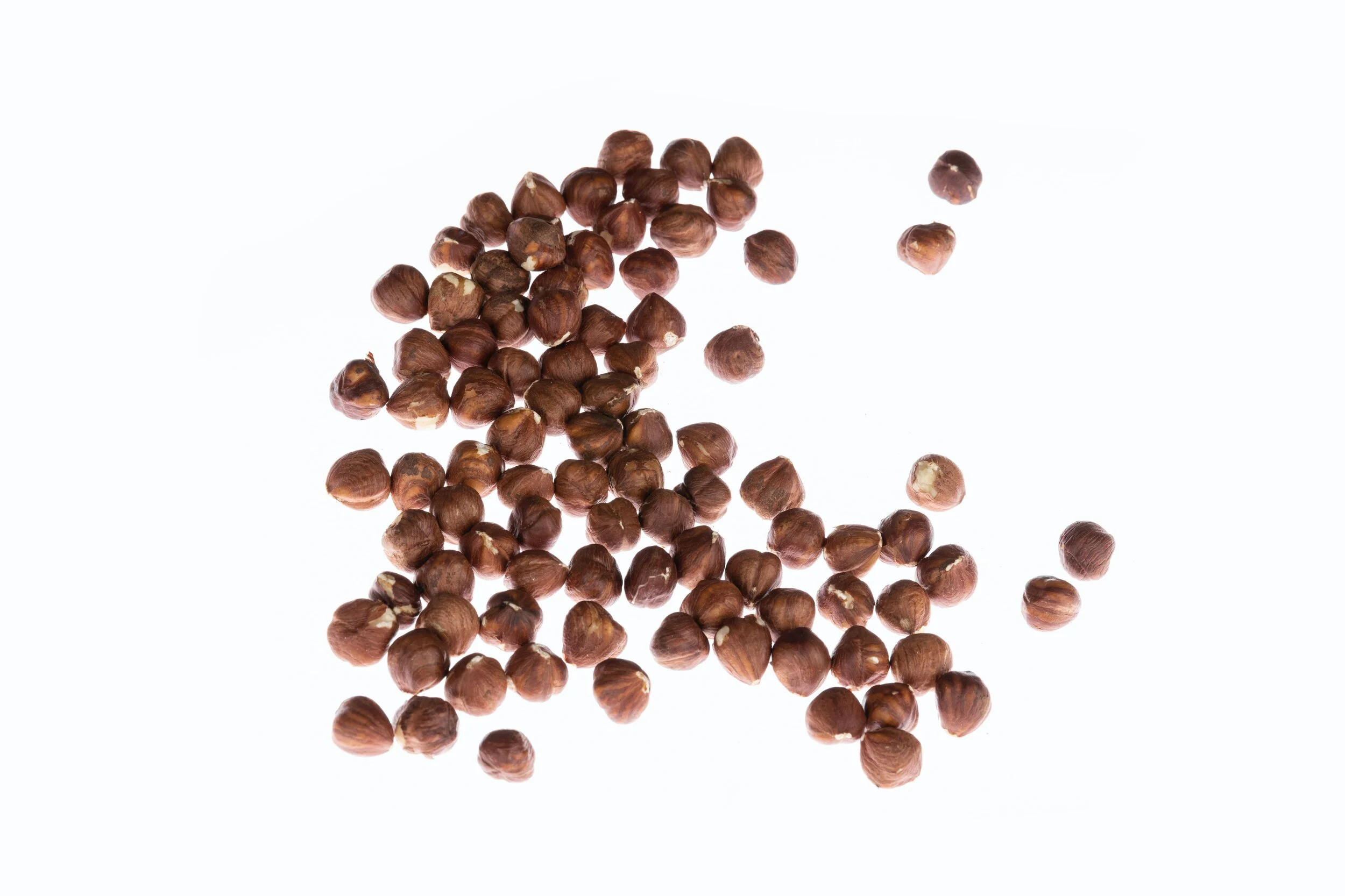Deliver more flavor to your meals with these spice recipe blends
/Looking for more variety and flavor for your next meal? Something beyond simply sprinkling salt and pepper, but not much more complicated? Look no further. I’ve collected my favorite homemade spice recipe blends for you. These are better than the pre-packaged store-bought spice blends because they don’t contain unnecessary ingredients and they’re as fresh as you can get!
What makes these spice recipes my favorites? Not only are they delicious blends of herbs and spices, but they also contain powerful compounds for good health. Here at The Genomic Kitchen, we talk a lot about nutrigenomics which is the science of how food and nutrition power your genes toward your best health. the power of herbs and spices for your genes and your health.
Herbs and spices are among the richest sources of bioactives, those healthful food compounds like antioxidants and phytochemicals that have health benefits, such as reducing inflammation. Some of these bioactive compounds communicate (or as I like to say, “dance”) with our genes to improve our health. I like to call culinary herbs and spices the “secret weapon of genomics.”
How do you use these “secret weapons” toward your best health in the kitchen? In this blog article, I share my tips for getting the best from your spices and some easy and delicious home made spice recipe blends you can try at home.
Quick Tips on Getting the Best from Your Spices
Before I share the recipes, here are some quick tips on how to get the best return on your money— and your ingestion (ROI)— from your spices.
Know what a spice is. Spices can be berries (sumac, juniper), bark (cinnamon), root (ginger, turmeric), or seeds (cardamom, coriander). We are familiar with them in their dried and powdered form, but some can be used in their whole fresh form: ginger and turmeric, for example. Different from spices, some of the most common herbs include basil, marjoram, oregano, rosemary, sage and thyme.
Buy small but often. The best way to buy spices is in bulk. This means dispensing in small quantities from bulk jars. Bulk-dispensed spices sell more quickly and are replenished frequently. This means they are not “aging” in pre-sealed jars sitting on a store shelf and may not get rotated frequently. Small often means fresher for you. Look for the bulk area in your store.
Toasting brings out the aroma. Many recipes begin with the instruction: toast your spices over gentle heat. Adding gentle heat to spices releases their natural oils and aroma. This heightens the flavor these spices bring to a dish. Take time to do this if your recipe calls for it. Toasting spices that you cool, grind and add into a spice blend, also enhances their flavor. A little goes a long way when you take time to toast before you blend.
Roasting turmeric strengthens its health benefits. Through science we know that the health-conducive property of turmeric is curcumin. Curcumin can prompt your body to make its own antioxidants by activating the important Nrf2 pathway. It turns out that when you roast turmeric root, additional compounds are produced that can activate this same pathway. So if you have the chance to use raw turmeric root in cooking (grate and add into the recipe), then the heat from cooking gives your more food-gene talking power. Once again, a great return on your investment and return on ingestion (ROI).
5 - Store your new spice recipe blends in an airtight jar for 12 months. Be sure to keep them in a cool, dark place. Heat and light can reduce your spice’s vibrant colors and flavors, as well as the amount of health-promoting bioactives they naturally contain. Feel free to use small mason jars or old spice jars, just be sure they’re clean and dry before you fill them up with your new spice blend.
Here’s a tip: Whole spices stay fresh for up to 4 years, if stored correctly. To get the best value from your spices, keep them whole as long as possible, making smaller batches of spice blends along the way.
Spice Blends In the Kitchen
Now you know how to get the best from your spices, its time to try out some unique ways to incorporate them into what you eat. It’s easy to elevate a dish using spices or a combination of spices. The spice blends, I recommend you try in our featured recipes, are integral to many different cuisines around the world. If you’ve never made your own spice blend, I encourage you to try.
Many spice recipes are easy to make at home, using combinations of spices you find at your local store. You’ll feel like you’re traveling around the globe without leaving your house. Oh and your taste buds will thank you too. No leftover tonight I bet! Oh and one quick note. Spice blends often incorporate dried herbs in the mix too, so they are not always uniquely spices. Just saying….
Healthy Spice Recipes to Try Now!
Lebanese Seven Spice Blend
This flavorful spice blend, sometimes called “Baharat,” is commonly used in Middle Eastern cuisine. It goes very well in savory dishes with chicken, meat, rice or couscous.
Dukkah
Dukkah is a Mediterranean spice blend featuring toasted hazelnuts and almonds along with seeds and spices that create a rich and savory flavor. It can be sprinkled over grains, pastas or vegetable dishes, used as a coating for seafood, or mixed with oil and used as a dipping sauce. You don’t need to buy it pre-made because here’s how to make your own.
Shish Tawook Spice Mix
Shish Tawook is popularly used to spice chicken dishes in the Middle East. This spice blend is mixed with yogurt, lemon juice, and garlic. Then cubed chicken is marinated in it for at least four hours before being skewered and grilled. You can also use it to season any meat, lentils, tofu or tempeh.
To power up a food gene conversation with this blend, use Mexican Oregano which is a potent source of Naringenin, a food-gene cross-talking polyphenol!
Warm and Spicy Curry Blends
Turmeric, the bright yellow-orange spice that colors many curries, is known for the inflammation-fighting properties tied to its main component: curcumin. Turmeric works well in complex blends, where its pungent earthiness acts as a base to help bind other flavors together. Curry recipes are often unique and their blend of spices is frequently a personal secret among cooks! You can make our Genomic Kitchen Go To Curry Blend. This spice recipe is the perfect blend of spicy, savory flavors to kick any dish up a delicious notch.
Use our Go To Curry Blend to make our Curried Cod With Tomato Sauce meal. One pot meal in 20 minutes!
Download the recipe here
Spicy Turmeric Blend
What easier and more yummy than spicy nuts to snack on? Chef Pam Florence came up with this quick and easy blend of turmeric , cayenne and black pepper to add some heat and sweet (maple syrup) to cashew nuts. You can try this with a variety of different nuts to change up the taste, texture and nutrition too!
Sweet and savory glazed nuts from Zest for Cooking
Harissa
Harissa is a hot sauce or paste that is used in many North African and Middle Eastern cuisines. It’s made from chili peppers, paprika and olive oil, and can also include garlic and other spices. Harissa paste is sold pre-packaged, available as a spice powder or can be made at home. Add it to soups and stews, use as a rub for meat, toss it with roasted vegetables, or simply use it as a condiment.
Here’s step-by-step instruction from The Forked Spoon for making your own Harissa which keeps for up to a month in your refrigerator.
Za’atar
Za’atar is a spice blend from the Middle East traditionally made with sesame seeds, salt and thyme, oregano or marjoram. Sumac, a sour berry, is often thrown in the mix as well. Suffice to say, many variations of Za’atar abound. Za’atar is often enjoyed in salad dressings, sprinkled over roasted vegetables or tofu, and is often added to falafels.
In this spiced chickpea recipe, nutrition expert Amy Gorin uses a za’atar blend featuring sumac, sesame seeds and hyssop which is an herb in the mint family. See, you can change things up any way you like! Amy also includes a spice blend option using Italian seasonings and also truffle salt!
Check out Spiced Roasted Chickpeas with zatar by Amy Gorin, RD
Want more ideas?
Head over to our Pinterest and check out our Creative Spices board. Check out our other boards too and be sure to follow us!
Check out the Meals and More section in The Genomic Kitchen Recipe Rolodex. Look for the Curry Collection Recipe Pack. Plenty of spice recipes in there to tempt your taste buds and nourish your genes!
References
Esatbeyoglu, T., Ulbrich, K., Rehberg, C., Rohn, S., & Rimbach, G. (2015). Thermal stability, antioxidant, and anti-inflammatory activity of curcumin and its degradation product 4-vinyl guaiacol. Food & function, 6(3), 887–893. https://doi.org/10.1039/c4fo00790e.
LINK: https://pubs.rsc.org/en/content/articlelanding/2015/FO/C4FO00790E#!divAbstract










